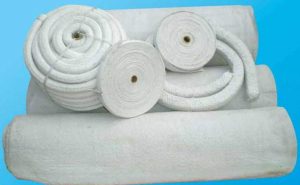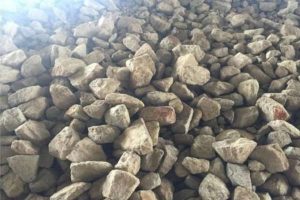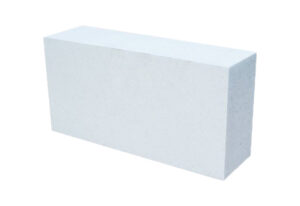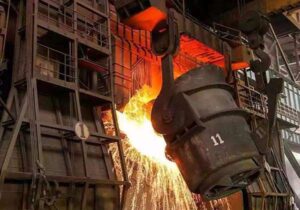Les briques frittées ne sont pas seulement durables, mais ils abritent aussi des personnes. Un bon cadre de vie et de travail. Il est apprécié pour son soin envers les êtres humains et sa grande contribution à la société..
Aujourd'hui, in the United States, the world’s largest developed country, sintered bricks still occupy half of its wall materials. In many European countries, sintered brick is considered a luxury building material. In developed countries, 1M3 of sintered bricks (equivalent to our sintered ordinary solid bricks 684 pièces) can be exchanged for 2.5 ~ 3.5t cement, which the poor can not afford to use.
In the United States, the same place two buildings area. Structure. Style. The decoration of the same country house. Brick than concrete is much more expensive, in developed countries rich people live in brick cottages, and the poor only live in concrete high-rise buildings.
A knowledgeable authority of the European Construction Association once said: Now there are many so-called new wall materials in the world, that are desperately trying to imitate the performance of sintered bricks. Cependant, they can only imitate one or several properties of sintered brick but not all properties of sintered brick, in this sense, it can be said that sintered brick is the decathlon player in wall materials.
NASA in its published report on the moon more clearly pointed out that in the future to build a human shelter on the moon, the only available material is sintered brick.
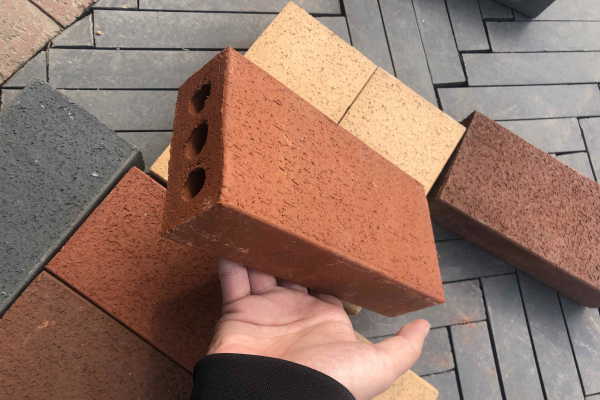
These Are All Due To The Many Perfect Properties Of Sintered Bricks.
1. sealing performance: as big as the Great Wall of China once blocked the northern Huns, as small as a short piece of wall to distinguish inside and outside. All play a role in isolation and a certain amount of closure.
2. load-bearing function: China’s current sintered brick quality standards provide for load-bearing brick compressive strength of a minimum of 10 MPa, in fact, as early as the 1960s in Sichuan Province, the gangue brick factory has produced 60 MPa (then called 600) above the sintered brick. After nearly a thousand years of vicissitudes, suffering from the military. The 84M high Kaiyuan Temple Brick Tower and Xi’an Big Wild Goose Pagoda and other tall buildings have also proved the strong load-bearing capacity of sintered bricks.
3. Durabilité: The Vienna Hill brick factory in Austria proudly and openly guarantees to the world that the service life of the sintered bricks it produces is 200 years, while it has long been proven that the sintered green bricks produced in China have reached a thousand years of immortality! Throughout the world currently preserved with more than hundreds of years of history of ancient buildings are brick or stone.
4. fireproof performance: sintered brick is sintered at a high temperature of about 1000 ℃, the general fire can not help it, so the Ministry of Public Security General Administration of Fire identified it as a class A fireproof building material.
5. waterproof performance: roof tile waterproofing is known to all. Roof tile is a member of the sintered brick family, sintered brick also has a certain waterproof function and many pools. Kiln. Small dams are the proof. 6.
6. weather resistance: sintered brick in ± 100 ℃ can still maintain its strength and other important properties remain unchanged, so NASA believes that “the future to build a human shelter on the moon the only available material is sintered brick.
7. la stabilité: sintered bricks have no dry and wet shrinkage. The coefficient of thermal expansion is also very small and is not bent rather than broken, there is no external stress and deformation.
8. thermal insulation performance: it is well known that a house with a cement tile roof is hotter in summer and colder in winter than a house with sintered tile (small green tile or flat tile) roof. This is because ordinary concrete transfers heat energy faster. Actual measurements show that the heat transfer capacity of sintered ordinary solid bricks is only 60% à 70% of that of ordinary concrete. So sintered bricks are much better than ordinary concrete in terms of insulation performance.
9. sound insulation performance: sintered brick body in the extremely small microporous and pore wall on the sound wave transmission constitutes a great resistance, weakening and absorbing the sound and its energy. The actual measurement proves that the sound insulation capacity of 240mm thick ordinary solid brick wall is 51.2 decibels, which creates a relatively quiet small environment.
10. Breathing function: There are countless micro-pores in sintered bricks, which absorb moisture in the air when the air humidity is high and make people less stuffy, while they slowly release this moisture when the air is relatively very dry, thus reducing people’s hot and dry feeling.
11. decorative function: whether it is the red wall of the Forbidden City in Beijing or the bricks of the old city dwellings, they all give people the enjoyment of returning to the beauty of nature, and the colorful glazed bricks and tiles give us a world of flowers. Even the terracotta warriors and horses excavated from the tomb of Qin Shi Huang are sintered products of clay!
12. la flexibilité: can be built according to the rich imagination of the architects of various patterns of pavilions and pavilions. Roof. Ground. Tower. Castle, forming the imaginary world of flowers.
Unfortunately, many people living in the sintered brick circle are still not familiar with these excellent properties of sintered brick, which is probably “not knowing the true face of the mountain, only to be in this mountain”!
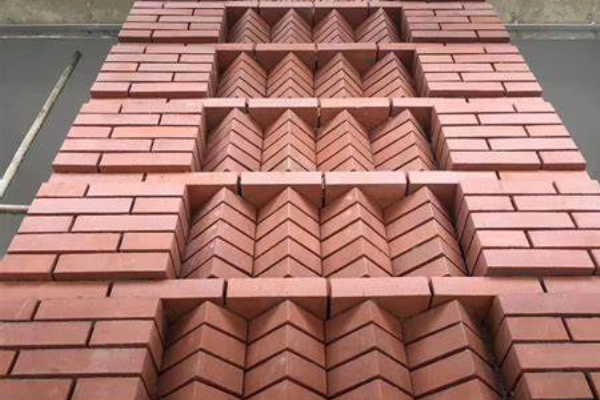
Compared with sintered ordinary solid bricks, sintered porous bricks. Hollow Brick has better technical performance.
1. better seismic performance: according to statistics, dans 1975 the country’s porous bricks. Hollow brick production has 1.3 billion pieces, comptabilité 2.2% of the brick production. La 1976 Tangshan earthquake also shattered the hollow brick, à 1985 the national hollow brick production fell to 890 million pieces, only 0.3% of the brick production that year. Par 1997 the production of hollow bricks rose to 10 billion, but because the production of solid bricks grew faster, the production of hollow bricks was still only 1.62% of the total number of bricks.
Porous bricks. Are hollow bricks not earthquake resistant? It is better to let the scientific experimental data speak for themselves.
The seismic research institute of the Chinese Academy of Building Research and the Northwest China Building Design Institute’s actual measurement data show that: under the same conditions porous brick through-joint shear strength than solid brick 18.4% higher, shear cracking load and ultimate bearing capacity by 17% et 19% respectively. When masonry with structural columns are even higher 19% et 26% respectively.
In residential construction, the weight of the wall is often more than half of the total weight of the building, porous (creux) bricks are much lighter than solid bricks, and the weight of the building is reduced, and the earthquake stress is also reduced. Measurements show that when the self-weight of the building is reduced by about 20%, the horizontal seismic stress is reduced by about 15%.
Porous Bricks. Better Seismic Resistance Of Hollow Bricks Can Be Achieved By:
1.1 Hollow blocks are largely lighter than ordinary solid blocks. Large block, then good stability, masonry mortar joints less, weak links are also less. Light, the seismic stresses generated by the body are correspondingly reduced.
Hollow brick surface grooves and porous brick holes and dents not only increase the contact area with the masonry mortar. And the mortar squeezed into the holes and dents during masonry forms a pin bond after solidification, which enhances the bond strength of mortar and brick and the overall seismic performance of the masonry.
1.2 Need to know that bricks are not used individually, but thousands of pieces are united to form a strong and long-lived building, which relies on cement mortar bonding material between them to form a wall with a certain strength. Here, the bonding performance and construction quality of cement mortar and other bonding materials (mortar fullness and its bond strength with bricks) play a crucial role.
No wonder it has been said, “Bad quality sintered bricks certainly do not build good quality buildings, and extremely good quality sintered bricks do not necessarily build good quality buildings.” Because steel bricks that are not well fixed together are also easy to push down.
Sintered porous and hollow bricks are larger than ordinary solid bricks, and the masonry has fewer mortar joints and fewer weak links in the wall, so it is much stronger.
When using ordinary solid bricks for a 1m high wall there are 16.6 horizontal mortar joints. But when using KP1 porous brick with the shape size of 240×115×90mm, there are only 10 joints. With 40% fewer mortar joints, the weak link is reduced, and the seismic performance of the wall is higher. If the use of not KP1 porous brick but the shape size of 240 × 190 × 240mm large sintered porous brick, not only the horizontal gray joints only 5, and vertical gray joints are also reduced, the seismic capacity of the wall is higher. (Note: Maintenant, there are already domestic sintered porous hollow blocks with a shape size of 365~490mm)
2. Improvement Of Construction Performance:
2.1 improve building construction work efficiency, when using sintered ordinary solid bricks, bricklayers have to use 684 bricks with a total weight of about 1700kg to complete 1M3 of masonry (in actual construction, minus cement mortar needs about 530 ~ 550 pièces / m3).
And when using kp1 type porous brick only need to use 402 pieces of total weight 1200 ~ 1300kg (not deducted cement mortar, le même ci-dessous), when using the shape size of 240 × 190 × 240mm hollow brick, as long as 193 pieces of the total weight of about 800kg brick, no wonder in the city’s hollow brick Xichang City construction site brickworks first ask what is used “brick” too.
2.2 reduce project cost: as mentioned before when using ordinary solid brick, every 1m high masonry has 16.6 horizontal gray joints, using kp1 type porous brick only 10 gray joints.
And when using hollow bricks with external dimensions of 240×190×240mm, there are only 5 horizontal mortar joints, and the cement mortar required for each 1m3 of masonry is 0.2m3. 0.12m3 and about 0.06m3 respectively.
2.3 Since the capacity of ordinary solid brick is 1700kg/m3, kp1 type porous brick is about 1200kg/m3 and hollow brick is 800kg/m3 or lower, the transport weight and cost of materials are also significantly reduced.
2.4 In civil buildings the weight of the wall is about half of the total weight of the building, the capacity weight of masonry brick is reduced, the burden of the foundation is also reduced, and the bearing capacity of beams and columns for structure is also reduced. So when porous brick or hollow brick is used as the main material of the wall, not only the cost of the foundation decreases, but also the amount of steel is similarly reduced.
The information from Liangshan State Design Institute shows that: when using hollow bricks with a hole rate of about 50% instead of ordinary solid bricks for filling walls, each m2 of floor space, can save 5.5kg of steel used in beams or columns. equivalent to saving all the steel needed for floors and roofs.
3. Better Insulation Performance
It is well known that still, the air is a good thermal insulation material. New cotton wool retains essentially still air in the countless voids made up of cotton fibers, so it can keep heat.
With old “old lint”, the gaps in the cotton fibers are tightened and the “still air” is gone, so it is “not warm”.
The knotted porous brick or hollow brick with its crisscrossing ribs and walls cleverly arranged to form a certain strength of the brick and its mutual separation of the hole. Seams to store the basic static air, to heat insulation, two birds with one stone.
It should be noted that the insulation performance of the wall is often worse than the insulation performance of the brick. This is because the large number of mortar joints in the wall provides a fast path for heat flow transfer (thermal bridge). So as much as possible increasing the shape of the brick size, and reducing the masonry gray joints, is an effective means to improve the thermal insulation performance of the wall.
The current use of external insulation. Internal insulation and other measures not only increase the cost of construction and its service life is much lower than the building itself, self-insulating brick not only does not require additional investment and can and the building itself with life and death and common fate.
4. Better Sound Insulation Effect
The actual measurement shows that the sound insulation capacity of 240mm thick ordinary solid brick wall is 51.2 dB while the sound insulation capacity of 190mm thick round hole porous brick wall reaches 46~54 db.
La société PER Refractories est située dans la ville de Xinmi, Province du Henan, la patrie des matériaux réfractaires en Chine. Notre société est une entreprise réfractaire basée sur la technologie intégrant R&ré, production, Ventes, et service technique. La richesse des ressources et l'excellente qualité du territoire offrent des conditions supérieures inégalées pour la production de matériaux réfractaires. Nos principaux produits sont des briques d'argile réfractaire, high alumina fire bricks, briques de silice réfractaire, briques réfractaires au magnésium, briques de mullite, briques isolantes, et autres produits résistants aux hautes températures.

